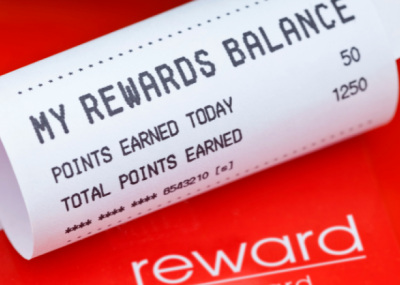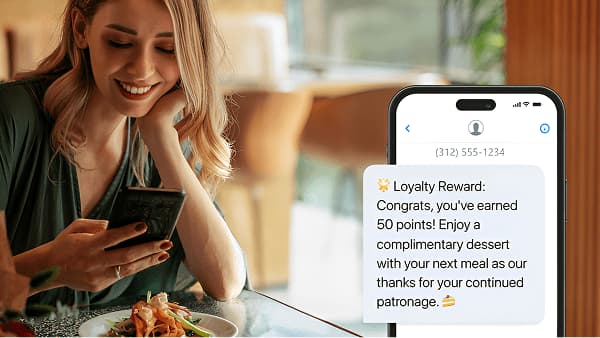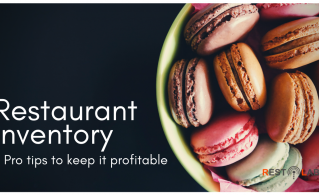Key Takeaways
Let's face it: humans are hardwired for convenience. And what can be more convenient than ordering food online and getting it delivered at one's doorstep in less than 30 minutes?
Digital ordering and delivery have shown a positive impact on the sales and profits of restaurants that adopt these systems. The fastest-growing part? Digital delivery, by which consumers order food with a click of a button on their desktop or a swipe on a smartphone app.
By 2023, restaurant delivery is estimated to grow at three times the rate of on-premises sales, with the preponderance going to online orders.
Food Delivery is no longer just a nice talking point for restauranteurs. It's a long game and profoundly moving needle on the all-important elements of the restaurant industry. Restaurants are investing in overhauling the supply chain and adopting technology to have end-to-end control of the entire food delivery process.
Setting up an in-house delivery system
Having an in-house delivery system can be as simple as assigning a staff member to deliver the food to nearby locations. The simplest way to deliver is to choose bike deliveries to nearby areas where the staff can reach the location within 30 minutes of placing the order. Anything beyond this can impact the rate of repeat orders as people don’t like to wait long, and neither they would appreciate a cold, soggy box of pizza delivered to them.
People ordering food online are eager to get their deliveries as early as possible, and delayed delivery can make them look out for other options. Inaccurate orders, unappealing and cold food can leave a negative impact on the customers.
The first step to a successful implementation of in-house delivery is to see how things work with limited resources and service before committing to longer and expanded delivery areas. In addition to this, it’s important to transport food in well-wrapped packages or spill-free containers to keep it fresh, hot and appealing. A deep understanding of food quality, customer expectations and logistics is what it takes for a restaurant to win in the long run.
Many restaurant POS systems are adding an online ordering and delivery option to their offering. Web and mobile apps both support such integration. You can use such technology to your advantage for assigning orders to your drivers and then tracking them once they are dispatched. Integrating your online ordering system with an efficient delivery platform can help you keep track of the end-to-end process, assess drivers’ performance as well as optimize routes.
Taking care of these details is necessary when your employees are delivering orders. Maintaining good quality and quick turnaround time will ensure that customers would be more likely to order from you. This can help restaurants reclaim more of the increased revenue from digital ordering.
How much it costs to have an in-house fleet of delivery drivers
We did the math! On average, an in-house delivery system turns out to be 46%-50% cheaper than third-party delivery providers, such as DoorDash, UberEats, GrubHub and so on. On the low end, assuming a modest 1500 deliveries each month, this translates to an average monthly savings of $5000- $6000, much needed funds that a startup business can utilize to expand its operations, run digital media ads to attract more customers, employ more drivers to expedite digital order processes or simply buy state-of-the-art equipment to improve performance in the kitchen. Not to mention, the total cost savings only compound as the volume of digital orders increase.
Want to know the cost breakdown for your existing delivery operations in the United States? Get in touch with our consultants and marketing experts today!
Why third-party delivery won’t cut it
Hungry Diane in Seattle loves to order a Cuban Sandwich from her favorite restaurant, at least once a week. The sandwich that costs her only $9.99 arrives at her doorstep in less than 40 minutes. The problem is that Panera pays approximately $5 for each delivery, which means that in order to breakeven or even to make a decent amount of profit, they’d have to sell at least 10 times more than what they did before.
Hiring delivery services is not a cheap stall. It comes at a cost. When using third-party delivery services to fulfill the order, restaurants relinquish 15–25 percent of the check, or more that can be overwhelming for many traditional restaurants.
Moreover, by relying on third-party vendors, restaurants lose control of the experience and brand value as most customers see themselves ordering from third-party vendors like DoorDash, UberEats, and, not the restaurant itself. This also means that the restaurant does not get the advantage of customer data, nor can it integrate a loyalty program to retain the existing customers to capture repeat orders. On the other hand, if something goes wrong during the delivery process, the customers blatantly blame the restaurant.
All these factors and many more, (read here) has compelled full-service eateries as well as established brands to consider getting in-house ordering and delivery systems.
Conclusion
As restaurant owners, it is important to understand what the shift is and establish systems to cater to the market. It’s time we stop giving your margins away to others and make efforts to capture the incremental sales. Choosing in-house delivery gives you the freedom and flexibility to define your brand identity, as well as open opportunities to develop better communication with your end customers.
Keep in mind that delivery will only grow your brand if you already have a market presence and a loyal customer base. Read 350-degree marketing approach to attract new customers and retain the existing ones.
Fortunately, it’s never been easier to run, manage and market a digital platform. If you want to launch your restaurant online, contact us now and we’ll be happy to help you sell food online.
Frequently Asked Questions
Self-delivery allows restaurants to manage their own delivery services without relying on third-party apps, helping to cut out commission fees and increase profit margins.
Self-delivery helps build direct relationships with customers, offering better control over the customer experience and enabling personalized promotions to boost demand.


.gif)








